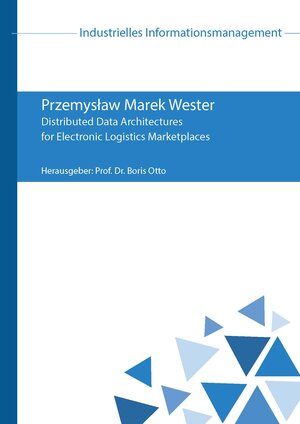Of all truck kilometers completed in the European Union in 2019, 20% were empty runs; this has an environmental impact, as transportation is responsible for more than a quarter of global carbon emissions. This also impacts the economy, as the cost of transport is added to the price of goods and services. Freight exchanges offer a mechanism to fill empty space in trucks, but they are not adequately used.
This dissertation investigates the current inhibitors and enablers of freight exchange usage in the transportation industry. Two of the biggest problems are trust between the participants and lack of transparency. These are the key characteristics of distributed ledger technology (DLT) tries to solve. This dissertation will report whether trust and transparency, as well as other properties of DLT, can address the main inhibitors of freight exchange. However, DLT comes with its own difficulties, such as lack of scalability, privacy issues, high energy usage, and security problems.
Nascent Design theories that could guide the implementation of freight exchange, which is also known by the more general term of electronic logistics marketplaces (ELM), are described here. Four design science research (DSR) cycles were used to create and evaluate a meta-model that can create different classes of ELMs in DLT. The meta-model aims to address the problems with ELM usage and the challenges of DLT development. The meta-model was evaluated on how well it addressed the meta-requirements. Additionally, a rigorous analysis of the security properties of the meta-model was conducted.
A theoretical model must prove itself through instantiation. Three instantiations were created using the meta-model and rigorously evaluated. The first instantiation of the meta-model, an ELM model running on non-DLT cloud technology, was argumentative and deductive. The second instantiation was created on permissionless public DLT, while the third was created on a permissioned private blockchain.
Every DSR instantiation generated new design knowledge, which was used to refine the meta-model. Through the development and instantiation of the meta-model, knowledge was generated, which was used to create design principles. These principles are a higher-level abstraction of the meta-model and should serve as a nascent design theory to guide the designers of new ELMs.
This dissertation investigates the current inhibitors and enablers of freight exchange usage in the transportation industry. Two of the biggest problems are trust between the participants and lack of transparency. These are the key characteristics of distributed ledger technology (DLT) tries to solve. This dissertation will report whether trust and transparency, as well as other properties of DLT, can address the main inhibitors of freight exchange. However, DLT comes with its own difficulties, such as lack of scalability, privacy issues, high energy usage, and security problems.
Nascent Design theories that could guide the implementation of freight exchange, which is also known by the more general term of electronic logistics marketplaces (ELM), are described here. Four design science research (DSR) cycles were used to create and evaluate a meta-model that can create different classes of ELMs in DLT. The meta-model aims to address the problems with ELM usage and the challenges of DLT development. The meta-model was evaluated on how well it addressed the meta-requirements. Additionally, a rigorous analysis of the security properties of the meta-model was conducted.
A theoretical model must prove itself through instantiation. Three instantiations were created using the meta-model and rigorously evaluated. The first instantiation of the meta-model, an ELM model running on non-DLT cloud technology, was argumentative and deductive. The second instantiation was created on permissionless public DLT, while the third was created on a permissioned private blockchain.
Every DSR instantiation generated new design knowledge, which was used to refine the meta-model. Through the development and instantiation of the meta-model, knowledge was generated, which was used to create design principles. These principles are a higher-level abstraction of the meta-model and should serve as a nascent design theory to guide the designers of new ELMs.










